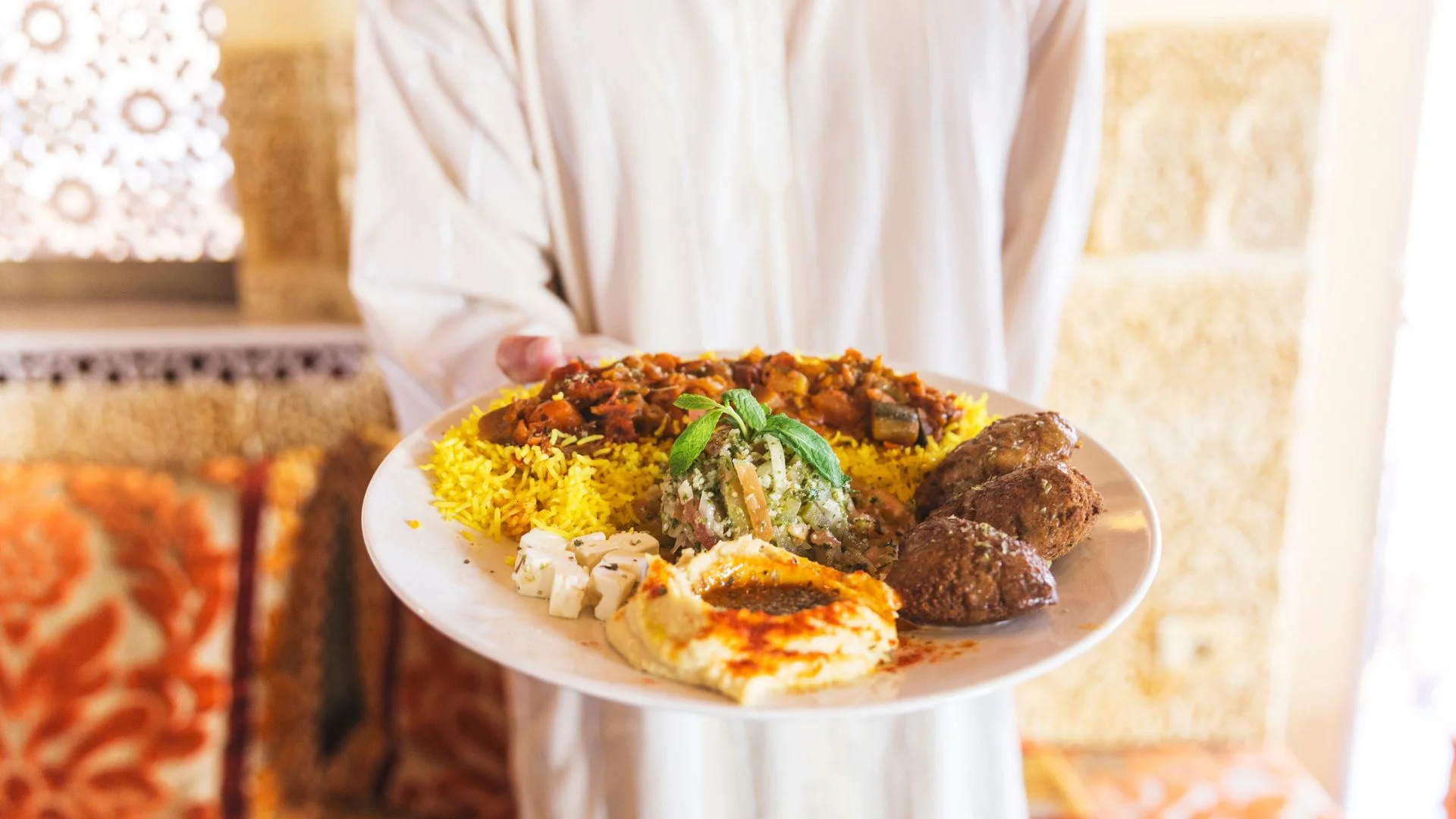

Oman, a country renowned for its rich cultural heritage, offers a culinary experience that is just as vibrant and diverse. Omani dishes, rooted in tradition and influenced by centuries of trade, combine aromatic spices, local ingredients, and unique cooking methods. From slow-cooked meats to fragrant rice, Omani cuisine tells the story of the nation’s history and people. This blog delves into some of the most iconic Omani dishes and the special ingredients that make traditional Omani food a true delight.
Oman’s culinary landscape is shaped by its geographical position and historical connections to Africa, Asia, and the Middle East. The result is a fusion of flavors, with a focus on locally sourced ingredients such as dates, seafood, and fragrant spices. Traditional Omani food is often served during communal gatherings, celebrating the importance of family and community in Omani culture.
Spices are at the core of Omani dishes, bringing warmth and depth to every meal. Some of the essential spices used in Omani cooking include:
These spices and local ingredients like dried limes, honey, and dates create the signature flavour profiles that define traditional Omani food.
One of the most famous Omani dishes, Shuwa is a slow-cooked, marinated lamb or goat dish that is prepared for special occasions. The meat is marinated in a mixture of spices, wrapped in palm leaves, and cooked underground for up to 48 hours. The result is tender, flavorful meat that is typically served with rice or flatbread.
Key Ingredients:
Majboos, also called Kabsa, is a popular rice dish made with chicken, lamb, or fish and infused with aromatic spices such as cardamom, saffron, and cloves. This dish is a staple in Omani households and is often served during gatherings.
Key Ingredients:
Reflecting Oman’s coastal bounty, Mashuai is a dish of roasted kingfish served with spiced rice and a zesty lemon sauce. The fish is marinated with garlic and spices and then roasted to perfection.
Key Ingredients:
Mishkak is a popular street food featuring marinated meat skewers, typically beef, lamb, or chicken, grilled over an open flame. This flavorful Omani dish is often enjoyed during festivals and special occasions.
Key Ingredients:
Harees is a traditional dish made from wheat and meat, often served during Ramadan. It has a porridge-like consistency and is seasoned with spices such as cardamom and cinnamon.
Key Ingredients:
Halwa is one of the most cherished Omani dishes, made from sugar, rose water, saffron, and nuts. This rich, jelly-like dessert is often served with Omani coffee, especially during celebrations.
Key Ingredients:
Luqaimat is fried dumplings flavoured with saffron and cardamom, then drizzled with honey or date syrup. They are a favourite treat during Ramadan and other festive occasions.
Key Ingredients:

Dates play a vital role in Omani cuisine, symbolizing hospitality and nourishment. These sweet fruits are used in various dishes, from soups like Sakhana to desserts such as Halwa. Oman produces different varieties of dates, each with its own unique flavor, such as Khalas, Fard, and Naghal.
Omanis take great pride in their hospitality, often welcoming guests with dates and Omani coffee, known as Kahwa. Meals are typically shared from large communal platters, emphasizing the importance of togetherness in Omani culture.
Omani dishes reflect the country’s deep cultural heritage, with each meal offering a taste of tradition, community, and history. Whether it’s the slow-cooked Shuwa, the sweet Halwa, or the comforting Harees, traditional Omani food is a celebration of flavors and hospitality. From family gatherings to special occasions, these Omani special dishes continue to captivate and bring people together in the heart of Oman.
By embracing both its past and its future, Oman ensures that its culinary traditions remain alive and evolving, a true testament to its rich cultural identity.
Never miss any important news. Subscribe to our newsletter.







